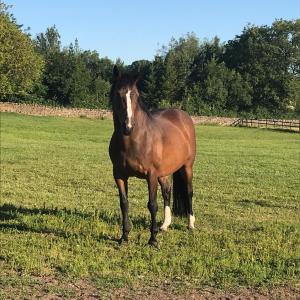
By Vet Selina Squarotti
Poor performance investigations are one of the most difficult scenarios for veterinarians.
Signs are usually quite vague, and nothing might seem to be overtly wrong with the horse or pony - but they are ‘not quite themselves,’ started refusing jumps sometimes, bucking or look grumpy when girthed.

The first step is deciding whether the issue is secondary to pain or purely behavioural.
A behavioural issue is a diagnosis by exclusion, which means all other possible causes need to be investigated and ruled out, before assuming the horse is being naughty.
History-taking is a very important step in the investigation process. What is the horse displaying, when did the signs start, has there been any recent change, did the signs progressively worsen or are they are worst at particular times of the day? These are just few of the questions needed to start having a general idea of the case.
If the horse looks unwell, such as having a poor coat, poor or high body condition or depressed demeanour, then a blood sample should be taken to check the general health status and, if indicated, to rule out Cushing’s and EMS.
If lameness is suspected, trot up and palpation of the entire horse are indicated.
Lameness is always painful and can be crippling for the horse. It can be constant, worsening with work, intermittent or improving with work.
Soft tissue lameness, for example ligaments and tendons, is usually worse on soft surfaces and horses improve when warming up. On the other hand, bony changes or conditions tend to worsen with work and on hard surfaces.
Back pain is common and could push the horse to buck or refuse jumps. But in the majority of cases it is secondary to a hind limb lameness, which is why it is important to investigate the whole horse properly. When a horse is not moving properly behind, it uses muscles wrongly, and the back might become tense and painful.
Middle aged and old horses can also suffer from more than one condition simultaneously and it is then important to identify if there is a main issue or if the combination is causing the problem.
If the horse seems irritable, doesn’t settle in the stable, doesn’t like being girthed or brushed under the belly and/or objects to the rider’s leg pressure, gastric ulcers could be a potential cause.
Horses have two different surfaces on the stomach, which means they can have two different types of ulcers.
It is therefore important not to blankly treat, but to have a clear diagnosis first, to know how severe and which type the ulcers are, because the treatment can differ.
Diagnosis of gastric ulcers is achieved with direct visualisation of the stomach through a camera, called a gastroscope, which enables veterinarians to have a full clear view of the entire stomach.
Clinical signs also seem to reduce before the ulcers are actually healed, which is why it is strongly advised scoping again before ending the treatment. The ulcers can worsen again if not completely cleared.
To conclude, poor performance is a difficult investigation, because signs are almost always not specific for one distinct condition, but vague and could be caused by many.
Especially in middle aged and old horses, multiple problems can happen at the same time, such as lameness concurrent with muscle pain and gastric ulcers, for example. It is essential to determine if the level and amount of work is appropriate for that specific horse or if changes need to be made.